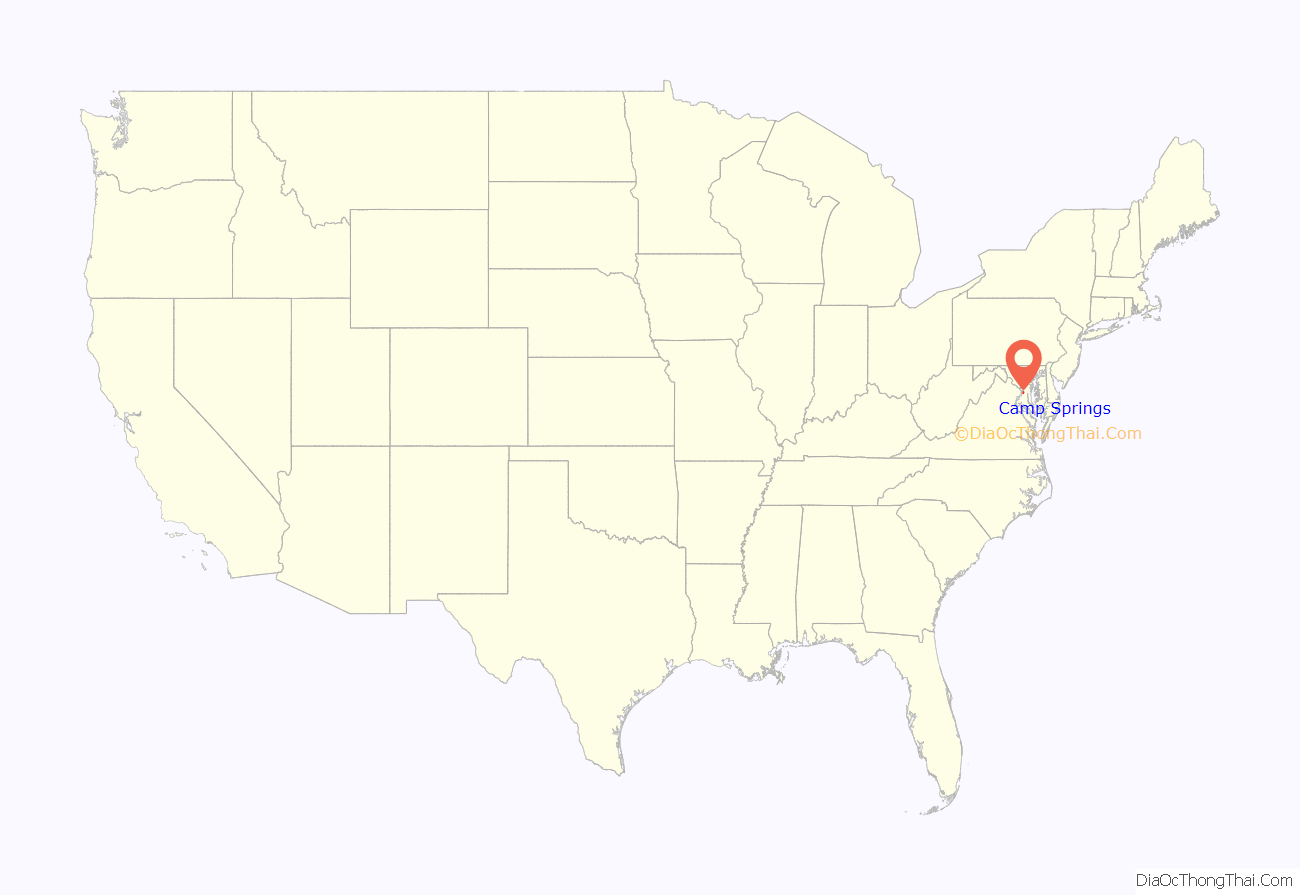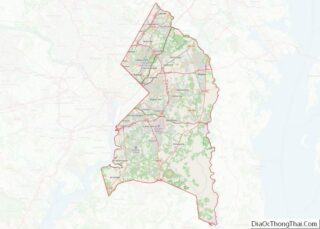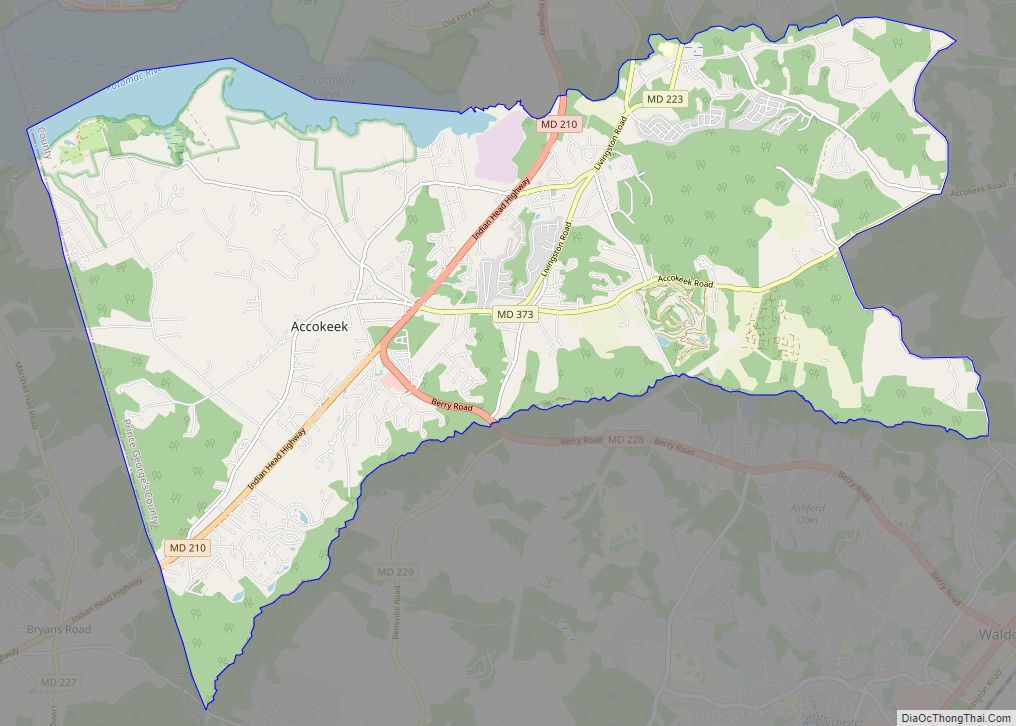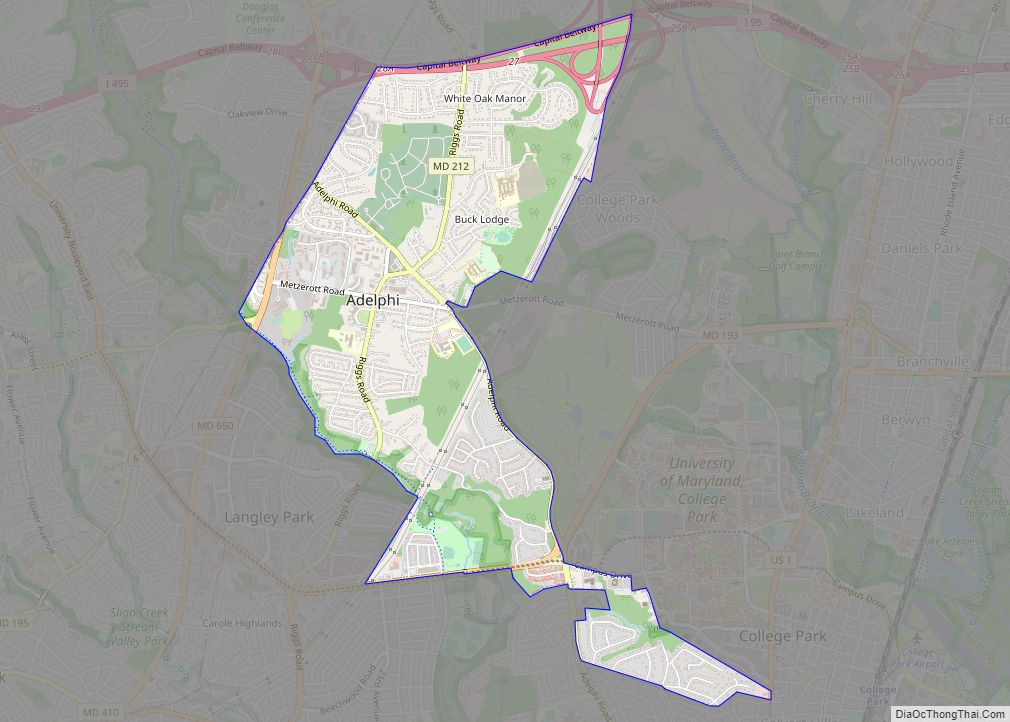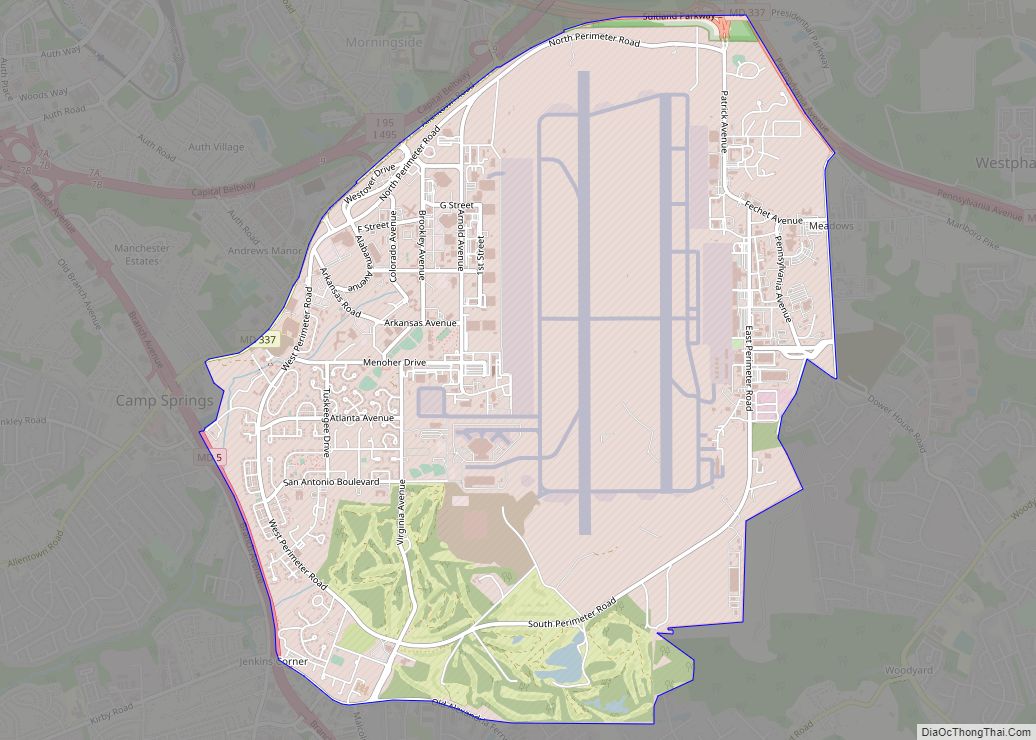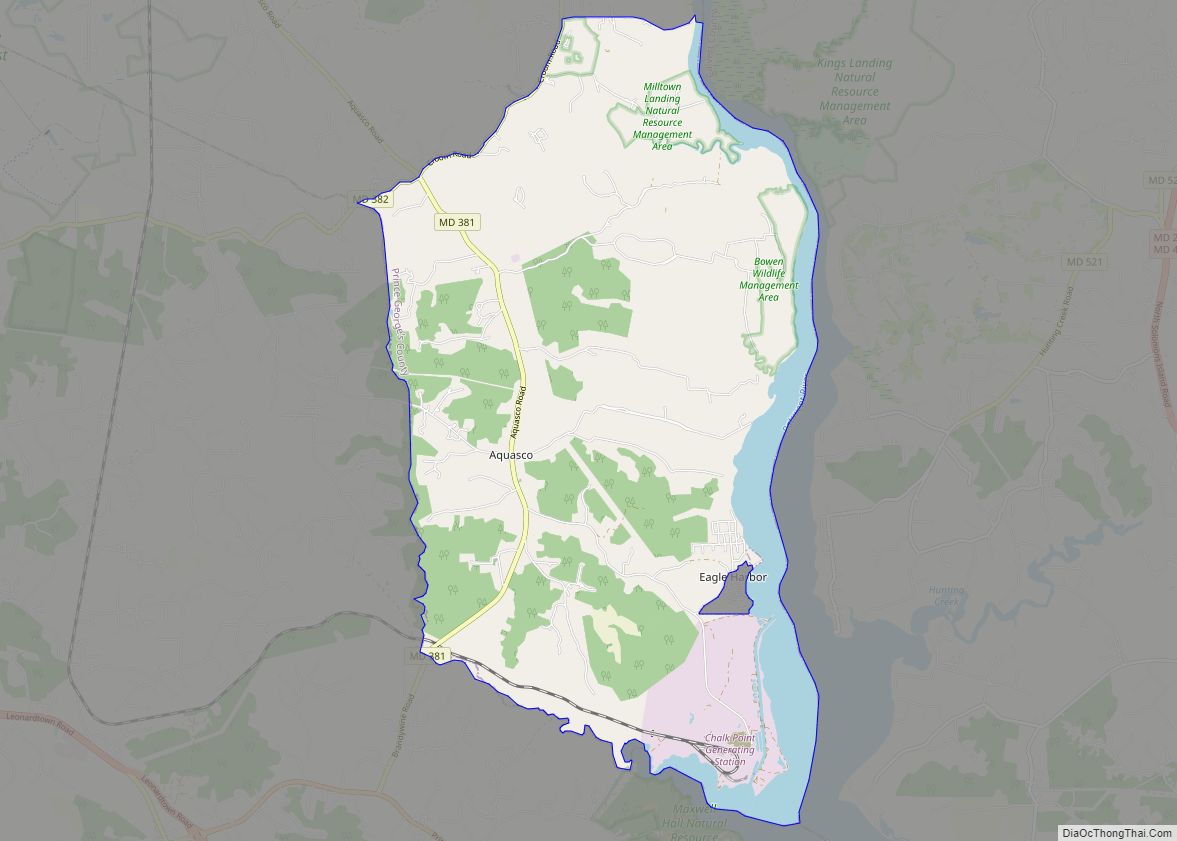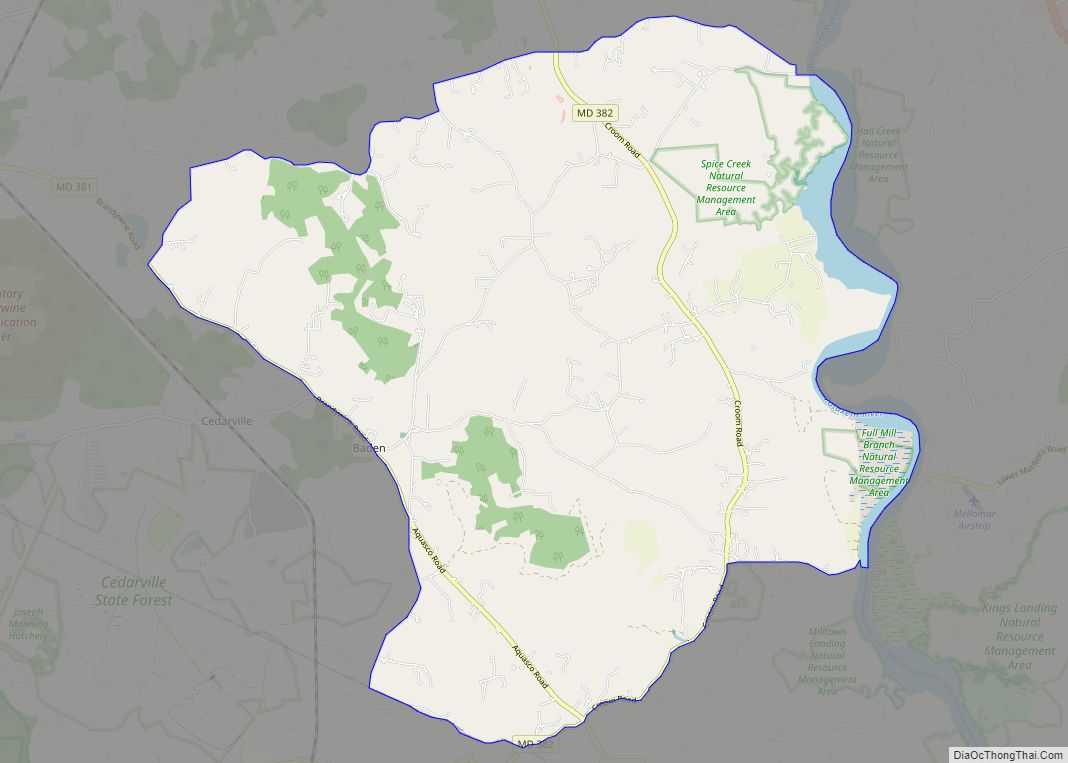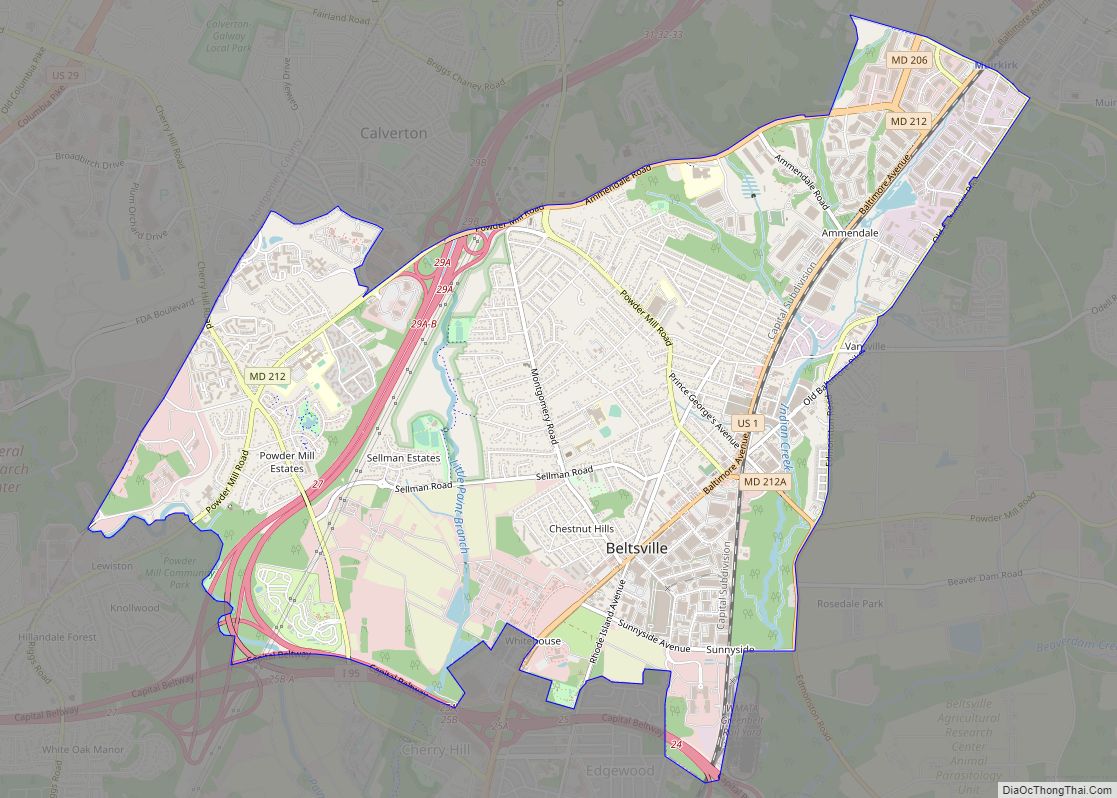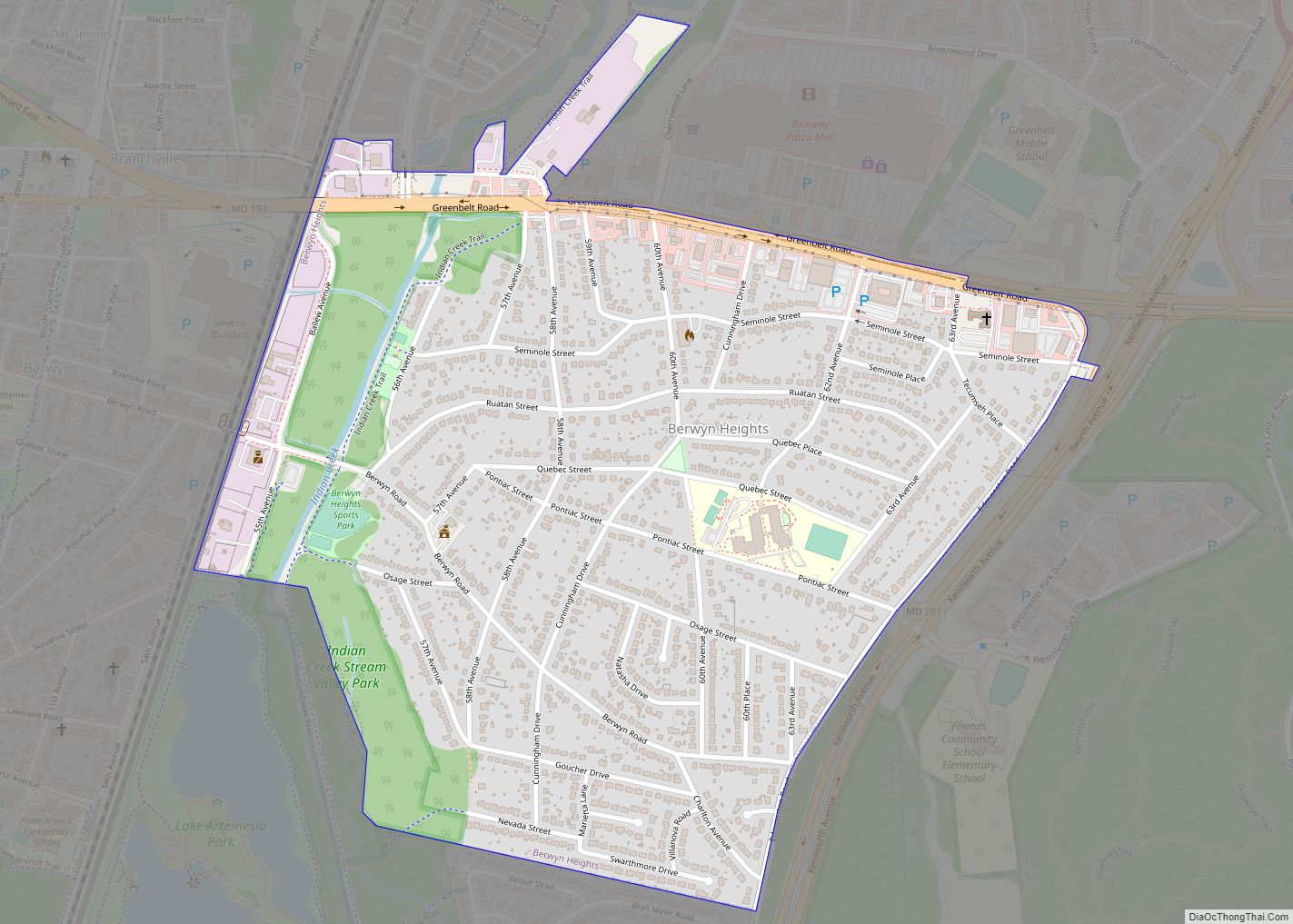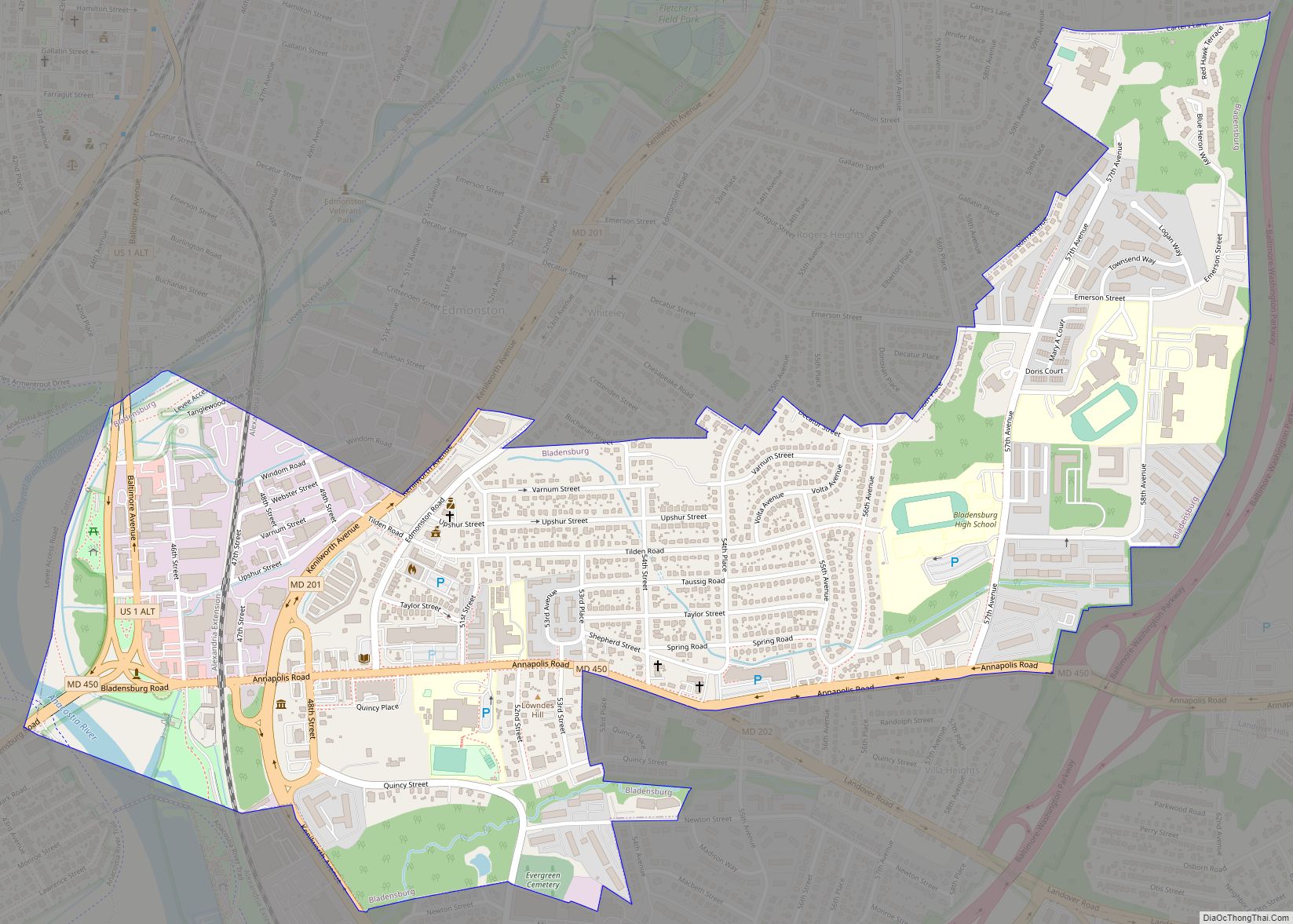Camp Springs is an unincorporated area and census-designated place (CDP) in Prince George’s County, Maryland, United States. The population was 22,734 at the 2020 census. Camp Springs is not an official post office designation; the area is divided among the surrounding mailing addresses of Temple Hills, Fort Washington, Clinton, and Suitland.
| Name: | Camp Springs CDP |
|---|---|
| LSAD Code: | 57 |
| LSAD Description: | CDP (suffix) |
| State: | Maryland |
| County: | Prince George’s County |
| Elevation: | 266 ft (81 m) |
| Total Area: | 7.69 sq mi (19.93 km²) |
| Land Area: | 7.68 sq mi (19.89 km²) |
| Water Area: | 0.01 sq mi (0.04 km²) |
| Total Population: | 22,734 |
| Population Density: | 2,960.16/sq mi (1,142.95/km²) |
| ZIP code: | 20746, 20748 |
| Area code: | 301, 240 |
| FIPS code: | 2412600 |
| GNISfeature ID: | 0597172 |
| Website: | www.campsprings.net |
Online Interactive Map
Click on ![]() to view map in "full screen" mode.
to view map in "full screen" mode.
Camp Springs location map. Where is Camp Springs CDP?
History
The community of Camp Springs was settled in the mid-19th century at the crossroads of present-day Branch Avenue and Allentown Road. By 1860, the settlement contained several stores, a blacksmith shop, a school, Methodist church, and several residences. Early maps record the name of this settlement as Allentown, after the Allen family. The Allens were large landholders in the area, and the town, adjacent road, and Allenwood Elementary School were named in recognition of them. The town’s popular name, and subsequently the name of its post office, was Camp Springs. According to local history, the community was called Camp Springs since soldiers en route to Fort Meade from the District of Columbia found the area to be a comfortable place to camp due to the abundant springs.
Throughout the late- 19th and early 20th centuries, the Camp Springs area did not experience significant growth. However, the opening of Andrews AFB on an adjacent tract of land, the proximity of the area to the District of Columbia, and a housing shortage after World War II made the Camp Springs area an ideal location for residential development.
Most of the development in the Camp Springs area occurred north of the Camp Springs crossroads in the 1940s and 1950s. The lack of water and sewer lines in most locations until the late 1950s and early 1960s kept the pace of development slow. The largest development in the 1940s was the subdivision of the Middleton farm north of Camp Springs. This farm was platted into Glenn Hills, Middleton Farm, and Middleton Valley. Guy Trueman built one of his many subdivisions in the mid-1940s by platting Trueman Heights on over 100 acres (0.40 km) in the northwest quadrant of the Camp Springs crossroads. Modest single-family houses were constructed along a fragmented grid of streets. Residential development during the 1950s primarily took the form of infill construction within subdivisions platted in the 1940s. One of the exceptions is the large Westchester Estates development located in the southwest quadrant of the Camp Springs crossroads. The over 400 houses were constructed along a curvilinear network of streets. Commercial development, consisting of shopping centers, restaurants, and hotels, extends along Allentown Road east of Branch Avenue. The largest boom of construction occurred in the 1960s and 1970s after the completion of water and sewer lines and the construction of the Capital Beltway. Pyles Lumber Company, a historic lumber business at the crossroads, was destroyed by fire on December 27, 2000. The 19th century crossroads vanished during the 20th century with the reconstruction of Branch Avenue into a limited-access divided highway, and extensive commercial and residential development.
Camp Springs Road Map
Camp Springs city Satellite Map
Geography
Camp Springs is located at 38°48′27″N 76°55′05″W / 38.807463°N 76.918028°W / 38.807463; -76.918028. According to the United States Census Bureau, the CDP has a total area of 7.7 square miles (20.0 km), of which 0.02 square miles (0.04 km), or 0.19%, is water.
Joint Base Andrews, home base of the Air Force Systems Command and the official presidential airplane Air Force One, is adjacent to Camp Springs, and the base in particular, along with federal jobs in Washington, D.C., were major reasons for the community’s original development. The Capital Beltway passes through the area, and the Washington Metro Branch Avenue station, southern terminus of the Green Line, is located nearby. The Maryland-National Capital Park and Planning Commission operates a year-round indoor and outdoor public swimming pool on Allentown Road. The Camp Springs Senior Activity Center is housed in the former Camp Springs Elementary School. From the Heart Church Ministries has an average weekly attendance of 7,000 worshippers.
Climate
The climate in this area is characterized by hot, humid summers and generally mild to cool winters. According to the Köppen Climate Classification system, Camp Springs has a humid subtropical climate, abbreviated “Cfa” on climate maps.
See also
Map of Maryland State and its subdivision: Map of other states:- Alabama
- Alaska
- Arizona
- Arkansas
- California
- Colorado
- Connecticut
- Delaware
- District of Columbia
- Florida
- Georgia
- Hawaii
- Idaho
- Illinois
- Indiana
- Iowa
- Kansas
- Kentucky
- Louisiana
- Maine
- Maryland
- Massachusetts
- Michigan
- Minnesota
- Mississippi
- Missouri
- Montana
- Nebraska
- Nevada
- New Hampshire
- New Jersey
- New Mexico
- New York
- North Carolina
- North Dakota
- Ohio
- Oklahoma
- Oregon
- Pennsylvania
- Rhode Island
- South Carolina
- South Dakota
- Tennessee
- Texas
- Utah
- Vermont
- Virginia
- Washington
- West Virginia
- Wisconsin
- Wyoming
